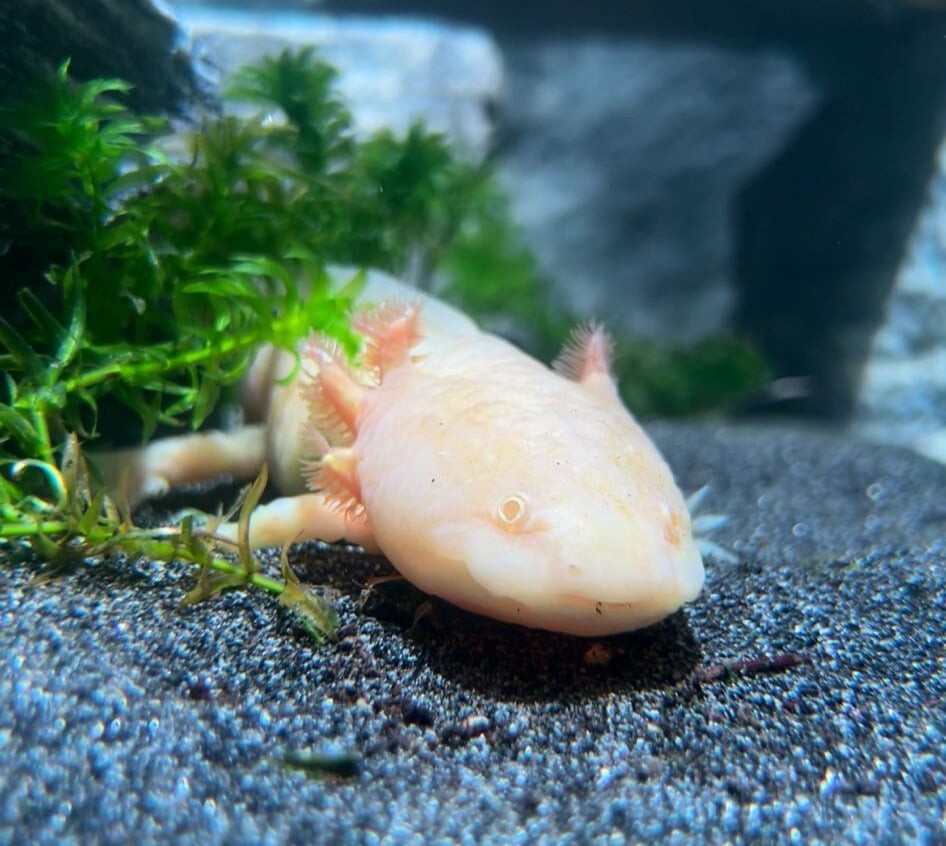Did you know
Part of the Ambystomatidae family of salamanders, Axolotls differ from other Salamander species as they aren’t land dwellers. They keep their juvenile features and remain in the shallow freshwater lakes of Southern Mexico.
Habitat
They are found exclusively in freshwater lakes near to Mexico City. These waters are murky and have an abundance of aquatic plants which serve as shelter, food and a place for them to lay eggs. As an indicator species, the Axolotl can help researchers gauge the health of their environment. Their sensitivity to changes means that scientists can easily track the water quality, temperature, and pollution levels.
Diet
As carnivorous predators, Axolotls use a suction method to suck up crustaceans, molluscs, insect larva, worms and even occasionally small fish. They are interesting feeders, locating food by smell and snapping at any potential meal by sucking the food into their stomachs with a vacuum force.
Factfile
- Axolotls can regenerate their limbs, this astonishing ability is often studied by scientists, who believe that limbs can be regenerated up to 5 times before scar tissue begins to form. Along with limbs, Axolotls can also regenerate parts of their organs, spinal cord as well as their brain.
- Unlike other amphibians, Axolotls stay in their juvenile state meaning features such as their feathery gills, elongated tail and aquatic lifestyle remain. This is called Neoteny.
- The feathered branches at the side of their head are gills. Axolotls however, do develop lungs and in extremely rare circumstances they can become land dwellers who use their lungs and lose the ability to use their gills.
- From the moment they emerge from their eggs, Axolotls live independently and mostly solitary for the rest of their lives.
- Critically endangered in the wild, Axolotls are on The International Union for the Conservation of Nature (IUCN) red list, suggesting there are only 50- 1000 in the wild.
- Pollution and habitat loss are the biggest threats to the Axolotl, these have contributed to their declining numbers. Fortunately, they have very minimal threats from predators.
- Females can lay up to 1000 eggs at a time.
- Axolotls live for around 10-15 years, although this depends largely on the quality of their habitat.
- Find out more about the Lifecycle, Habitat and Conservation Status of the Axolotl here!
Where can you find us?
Our harem of Axolotls can be found in our Frog Zone exhibit.






